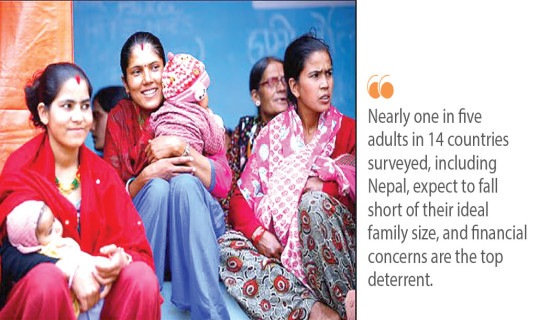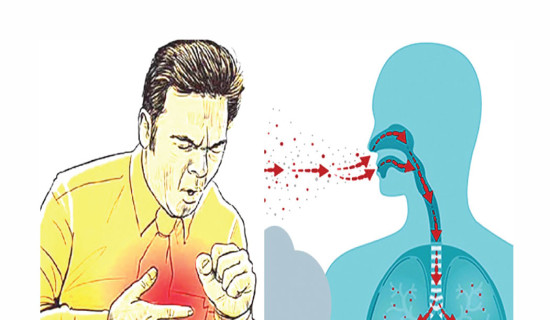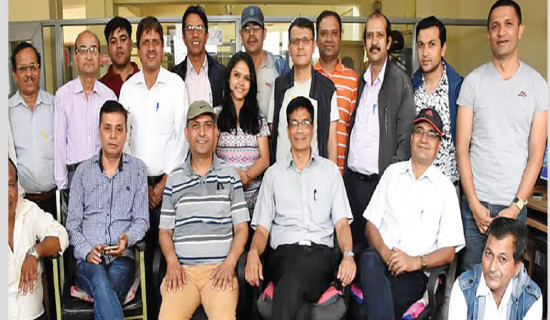- Monday, 5 January 2026
Is COVID-19 pandemic over? Experts suggest caution
Kathmandu, Feb. 21: With much respite people are back to normalcy, moving into the next phase of the COVID-19 pandemic, where the threats of disease and death have considerably diminished.
Preventive measures such as wearing a mask and physical distancing are no longer mandatory in public places, and compliance with hand hygiene has significantly decreased. Hospitalisations and deaths due to SARS-CoV-2 infection have decreased significantly worldwide including Nepal, despite COVID-19 restrictions being virtually lifted over t
According to the Ministry of Health and Population (MoHP), there are currently 15 active infected people across the country, and all of them are in home isolation. Nepal has not recorded any COVID-19 cases for many days in the last few months. Such occurrences raise the question: Is the pandemic over?
According to public health experts, no one has a definitive answer. “I think the SARS-CoV-2 virus is likely to remain in the community and may appear sporadically from time to time,” said Dr. Sharad Onta, a public health expert.
Rather than hoping for the end and letting protection down, everyone needs to stay alert, he cautioned.
Coronavirus infection was confirmed in Nepal for the first time in January 2020. The first wave of COVID-19 remained as a preparedness time with strong restrictions. After the first wave, for around two years, COVID-19 challenged the fragile health system with more hospitalizations and need of medical oxygen. At the height of the Delta-variant-driven second wave of the pandemic, nearly 50 per cent of all samples collected tested positive.
A total of 1,153,368 people have contracted the disease since the start of the coronavirus outbreak in the country to Monday, as of the data released by the MoHP. More than 8,000 people died in the second wave alone. And the death toll has reached 12,020 as of late.
In the second wave, the infectious virus that changed its structure did not only cause chronic diseases but also seriously affected all age groups.
However, the MoHP believes that due to the increased awareness among the general public, the increasing number of people who were fully vaccinated and the increase in hospital infrastructure, the third wave of COVID-19 did not become particularly threatening. According to the data of the MoHP, around 1,300 people died during and after the third wave.
Time to rethink
According to Dr. Sher Bahadur Pun, chief of the Clinical Research Unit at Sukraraj Tropical and Infectious Disease Hospital, the COVID-19 will likely remain a seasonal infection in the coming months or years, although its seasonality is not yet clear or is yet to be determined.
The hospitalisations and deaths due to COVID-19 infection have decreased significantly worldwide, indicating that the ‘pandemic’ may have been over, said Dr. Pun.
Though the virus may spread, it would not be threatening as that of the second and even third wave, he said.
Thus, the time has come to reconsider or reevaluate the status of COVID-19 as a pandemic, said Dr. Pun.
But there is still a lack of scientific consensus on the definition or criterion that determines the pandemic is over. That needs to be brought up in discussions, said Dr. Pun.
Virus will linger
As the number of people infected with the coronavirus continues to decline, many have started to forget about it. But public health experts have said that even though there are indications that the coronavirus will not appear as a pandemic, it will continue to resurface in the society.
All the pandemics eventually become endemic, meaning the infection is still present in a region or population, said Dr. Onta.
“The coronavirus will stay like other infectious diseases including cholera or measles. It is necessary to be prepared to deal with a possible outbreak in the coming days,” he added.
According to experts, thousands of people die every year due to common cold-caused flu in Nepal.
In this sense, the end of the coronavirus epidemic cannot be predicted, and the risk of new variants will remain.
Dr. Chuman Lal Das, director at Epidemiology and Disease Control Division, under the MoHP, said that though the cases are decreasing, we must be cautious as the risk remains.
Now the corona infection is decreasing in Nepal and other countries as well, said Dr. Das. “We are gradually returning to normal life, but there is still some risk.”
Continue vaccination drive
All the approved or authorised COVID-19 vaccines are safe, lessen the risk of severe illness and can reduce the spread of disease and help protect those who get vaccinated and others around them.
As of Sunday, Nepal has fully vaccinated 79.5 per cent of its population, while 27 per cent received a booster dose. Various developed countries have encouraged or recommended multiple booster doses of the vaccine against COVID-19.
The strength of the SAR-CoV-2 virus had weakened in the post-vaccination era, said Dr. Pun.
The vaccines against COVID-19 were not widely available or accessible during the second wave and hundreds of people lost their lives due to severe complications, reminded Dr. Pun.
After the number of vaccinated people increased dramatically during the third wave of COVID-19, severe complications, hospitalisations and deaths due to COVID-19 decreased significantly, compared to the second wave. As the vaccines are available in Nepal, one should get a booster dose, suggested Dr. Pun.





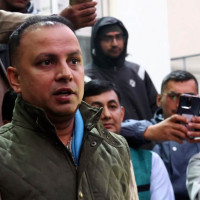
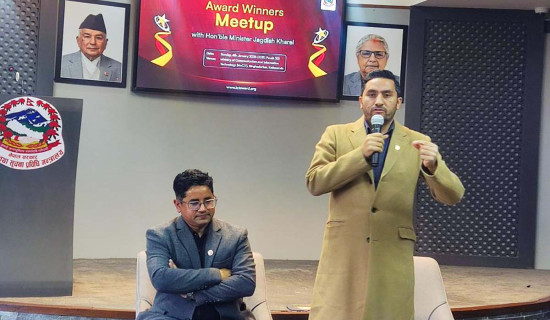

-square-thumb.jpg)
